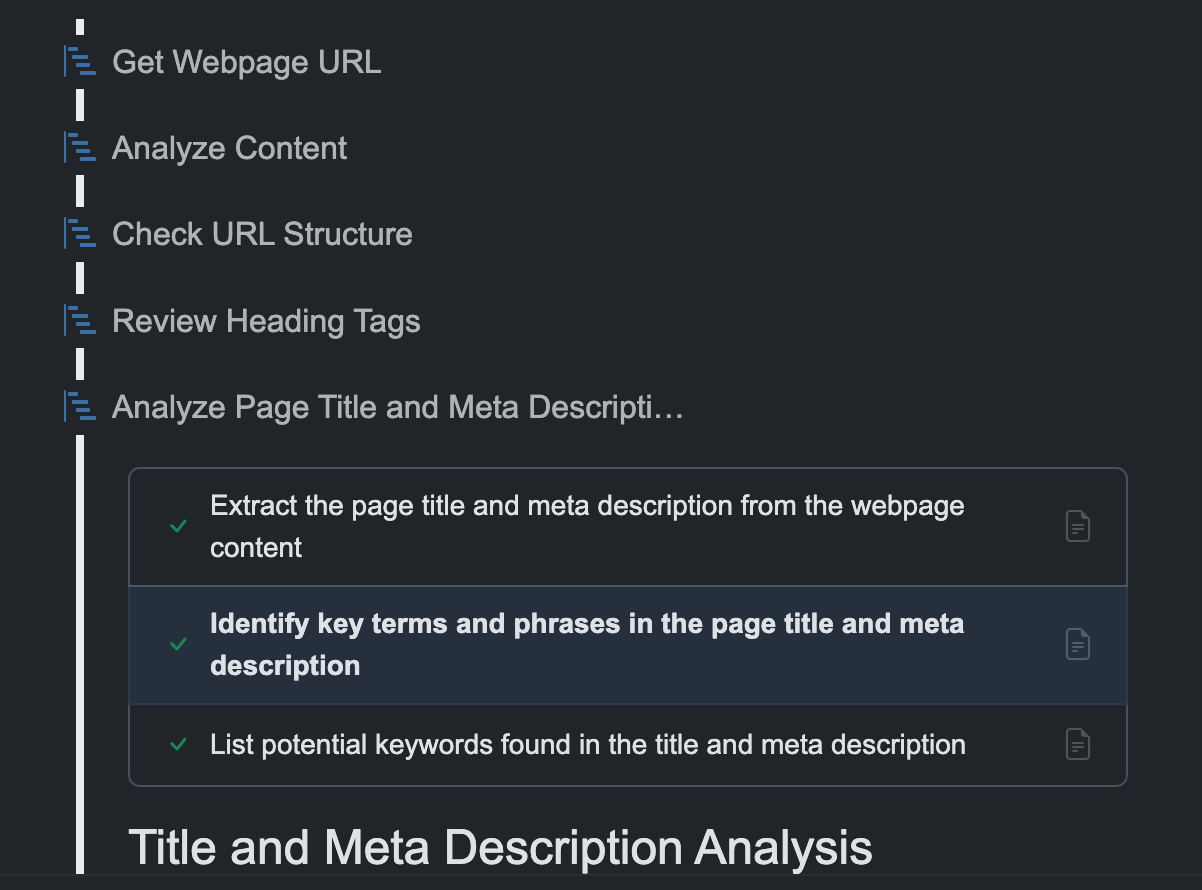Workflow
Customer Journey Decision Simulator
Simulate how real people make decisions—before you launch your campaign.

Workflow Overview
This workflow helps marketers understand how AI influences customer decision-making from initial curiosity to final purchase. By creating realistic buyer personas and mapping their decision journey, you can identify the key questions, concerns, and trade-offs that drive purchasing decisions. This insight helps optimize messaging, content strategy, and sales processes to better guide prospects through their buying journey.
Important: Before running this workflow, make sure to enable the LLM Evaluate tool in your knowledge base settings.
Customer Journey Decision Simulator
Overview
This workflow helps marketers understand how AI influences customer decision-making from initial curiosity to final purchase. By creating realistic buyer personas and mapping their decision journey, you can identify the key questions, concerns, and trade-offs that drive purchasing decisions. This insight helps optimize messaging, content strategy, and sales processes to better guide prospects through their buying journey.
Workflow Steps
Step 1: Define Problem Statement
"What problem would you like to simulate? This should be a question where multiple valid approaches exist, such as 'Should I drink Coke or Pepsi?' or 'Should my small business focus on Instagram or TikTok for social media marketing?'"
Step 2: LLM Selection
Ask: "Which LLM would you like to use for this customer journey?"
Step 3: Generate Representative Persona
Create a persona that represents someone who might realistically ask this question:
- Demographics (name, age, occupation, relevant background)
- Context (why they're asking this question)
- Knowledge level (expert, intermediate, beginner)
- Specific needs or constraints
Step 4: Customer Need Discovery Questions
Verbatim (with substitutions):
Using the llm_evaluate tool with:
- Prompt: "As [persona], I'm trying to decide [problem statement]. What are the most important questions I should ask myself to better understand this decision?"
- Evaluation Prompt: "Generate exactly three follow-up questions that would help [persona] better understand their specific needs and context for deciding [problem statement]. These questions should be open-ended, neutral, and focus on gathering essential information about their situation. Format your response as a numbered list of exactly three questions."
Provide a brief summary of the results.
Step 5: Decision Criteria Questions
Verbatim (with substitutions):
Using the follow-up questions call the llm_evaluate tool:
- Prompt: "As [persona] deciding [problem statement], I need to consider these questions: [insert 3 problem understanding questions]. What criteria should I prioritize in making this decision?"
- Evaluation Prompt: "Generate exactly three follow-up questions that would help [persona] prioritize decision criteria for [problem statement]. These questions should help them rank what factors matter most in their specific situation. Format your response as a numbered list of exactly three questions."
Provide a brief summary of the results.
Step 6: Trade-off Analysis Questions
Verbatim (with substitutions):
Using the prioritize decision criteria questions call the llm_evaluate tool:
- Prompt: "As [persona] deciding [problem statement], I've identified these key criteria: [summarize criteria from previous step]. What trade-offs should I consider between these criteria?"
- Evaluation Prompt: "Generate 2-3 questions that explore the most significant trade-offs [persona] might face when weighing different criteria for [problem statement]. These questions should highlight potential tensions between competing priorities. Format your response as a numbered list."
Provide a brief summary of the results.
Step 7: Final Decision Question
Verbatim (with substitutions):
Using the questions that explore the most significant trade-offs call the llm_evaluate tool:
- Prompt: "As [persona] deciding [problem statement], I've considered these trade-offs: [summarize trade-offs from previous step]. What final question should I ask myself before making a decision?"
- Evaluation Prompt: "Generate one final, comprehensive question that would help [persona] arrive at a recommendation for [problem statement]. This question should integrate their understanding of the problem, prioritized criteria, and trade-offs. Format your response as a single question."
Provide a brief summary of the results.
Step 8: Final Recommendation
Verbatim (with substitutions):
Using the comprehensive question that would help arrive at a recommendation call the llm_evaluate tool:
- Prompt: "As [persona], considering [problem statement] and this final question: [insert final question], what would you recommend?"
- Evaluation Prompt: "Analyze whether a clear recommendation was provided for [persona]'s [problem statement]. Identify if the response: 1) Makes a definitive recommendation, 2) Suggests multiple options with conditions, or 3) Avoids making a recommendation. Also note any hedging language or qualifiers used. Format your evaluation with clear section headings."
Provide a brief summary of the results.
Step 9: Process Summary and Insights
Verbatim:
Provide a report that:
- States the question that was asked
- Which LLM was used
- Includes a brief executive summary
- Includes a section with the detailed persona profile
- Explains the steps that form the decision process and what was considered
- Determine what recommendations the persona needs to choose from and assign a probability score that provides insight into which would likely be chosen (displayed as a list).Why This Workflow Works
- Multi-Model Analysis — Compare how different AI models interpret the same customer journey
- Persona-Based Insights — See decisions through the eyes of your target customers
- Probability Scoring — Quantify the likelihood of different customer choices
- Decision Path Mapping — Visualize the complete customer decision journey
- Marketing Optimization — Identify the exact messages that influence decisions
Pro Tip: Run simulations across different customer personas to identify which segments are most influenced by specific messaging approaches.
Run Your First Decision Simulation
Understand how real customers make choices before investing in your next campaign. ChatterKB’s Decision Simulator helps you predict customer behavior across different segments and scenarios.